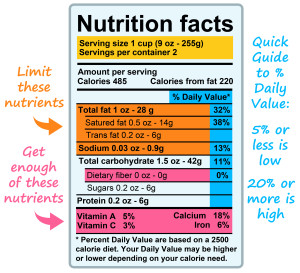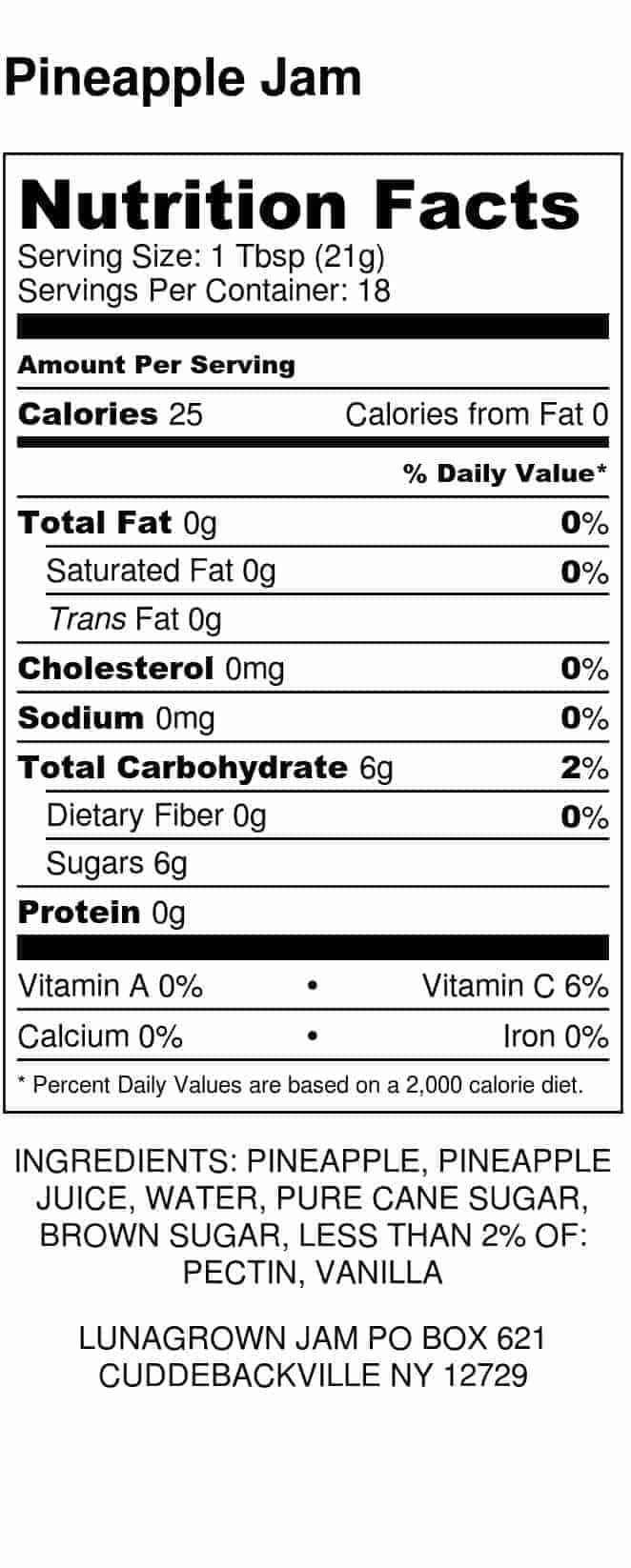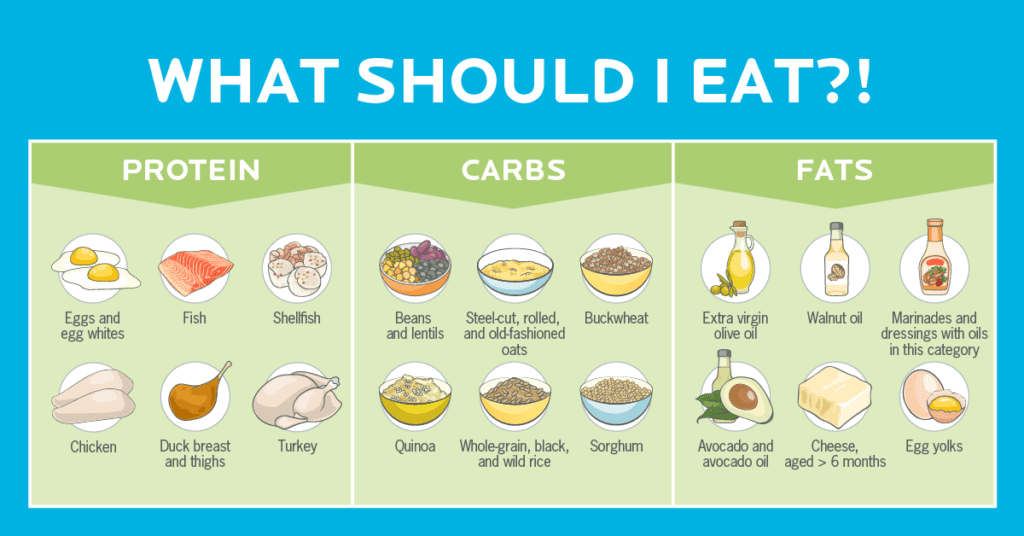45 nutritional labels on food are based on a diet of
Nutrition Facts Label Flashcards - Quizlet What things must be listed on the Nutrition Facts Label? Total fat, saturated fat, trans fat, cholesterol, sodium, total carbohydrate, dietary fiber, sugars, protein, vitamin A, vitamin C, calcium, and iron What is cholesterol? A waxy, fat-like substance mainly produced in the liver and is found in all cells Consumer Research on Labeling, Nutrition, Diet, and Health On diet and health, the survey asks about (1) awareness of the relationship between diet and diseases (cancer, heart disease, high blood pressure), (2) knowledge of fats and cholesterol, (3)...
How to Understand and Use the Nutrition Facts Label | FDA Dietary fiber, vitamin D, calcium, iron ad potassium are nutrients on the label that Americans generally do not get the recommended amount of. They are identified as nutrients to get more of....

Nutritional labels on food are based on a diet of
Nutrition: How to Read a Nutrition Facts Label - familydoctor.org The label provides a column of percentages called the percent daily value. It compares how much of a nutrient is in one serving of food to how much of that nutrient you should consume in one day. The percentages are based on a daily diet of 2,000 calories. You'll need to adjust the amounts if you eat more or less than 2,000 calories per day. Reading Food Labels | ADA - American Diabetes Association Put food labels to work. The Nutrition Facts labels on foods are really the key to making the best choices. We'll cover the basics so that these labels make shopping easier for you. You've heard it all. From carb-free to low-carb, to whole and empty carbs, it's hard to know what it all means. Blood sugar highs and lows aren't always ... Understanding Nutrition Labels - Earthy Harvest Whether you are consuming an essential food or a discretionary food like biscuit, cake, and sweet, it makes a big difference regarding how you interpret the food label and then decide what to eat. Nutrition Facts labels help you make healthy food choices and stick to a balanced diet. In this guide, we will assist you with the importance of ...
Nutritional labels on food are based on a diet of. Calories, Nutrition Facts, and Food Labels - Quizizz answer choices Yes, they make you gain weight. No, you should eat as many calories as possible for energy. No, but you should be aware of them to maintain a healthy weight. Yes. Calories do not add any nutrients. Question 10 30 seconds Q. A food label on a bag of chips shows that it contains 100 calories per serving. The bag contain 2.5 servings. Nutrition Facts and Food Labels When you need food and nutrition information based on fact or need to know how a healthy diet improves health and fights disease—rely on qualified professionals in the field. ... You may have noticed that infant food labels look different from adult food labels. While infant food labels also use the Nutrition Facts format, the information ... Understanding Sugars on Nutrition Labeling - Sugar.org The first nutrition facts label was introduced in 1994 following the Nutrition Labeling & Education Act of 1990, which made nutrition info on packaged food law. ... Percent Daily Value: Shown as a general rule, the percent daily value tells you how much a nutrient in a serving of food contributes to a daily diet, based on a target of 2000 ... Nutrition Facts Label - IFT.org The Nutrition Facts Label, also referred to as the Nutrition Facts Panel, on packaged food and beverage products is intended to help consumers make informed food choices that contribute to a healthy diet. The first Nutrition Facts Label regulations were published in 1993 and launched in 1994.
Food Labels 101: Understanding the Nutrition Facts Label Nutrition labels are based on a daily 2,000 calorie diet. Depending on your age, gender and activity level, you may need to consume more or less than 2,000 calories per day, so keep this in mind when viewing each label. Now let's take a look at the parts of the nutrition facts label and break it all down. Anatomy of a Nutrition Facts Label How to Decode a Nutrition Label - Healthline In fact, when the current nutrition facts label was first established in 1990, it was intended as a tool to inform Americans about the ingredients and nutrients our foods contain — and to verify... Your Guide to Nutrition Labels | EatingWell 8. Dietary Fiber. As high as possible (aim for 25 grams for women or 38 grams for men daily). 9. Sugars. Interesting but not always useful, since labels don't discriminate between naturally occurring sugars (such as in milk or fruit) and added sugars. 10. Vitamins and minerals. Nutrition Food Labels Flashcards | Quizlet nutrient reference value used on food labels to help consumers see how foods fit into their overall diet how the food fits in to the recommended 2000kcal diet 5% or less= low in that nutrient 20% or higher = high in that nutrient daily value must list total fat saturated fat cholesterol sodium total carb dietary fiber vitamin A Vitamin C calcium
The Effects of Nutrition Knowledge on Food Label Use: A Review of the ... Nutrition labels typically contain information on calories, serving size, and amounts and/or daily values of several macronutrients, vitamins, and minerals (e.g., fats, carbohydrate, calcium). In the US, the content of NFPs is government regulated and must include serving size, calories, nutrients, and percent of daily values of each nutrient. Food Labels | Nutrition.gov Folate and Folic Acid on the Nutrition and Supplement Facts Labels HHS, Food and Drug Administration, Center for Food Safety and Applied Nutrition Learn what common foods are natural sources of the vitamin folate, plus what foods may have folic acid added during processing. Interactive Nutrition Facts Label HHS, Food and Drug Administration Printable Materials and Handouts | Nutrition.gov What's New with the Nutrition Facts Label HHS, Food and Drug Administration The U.S. Food and Drug Administration (FDA) has updated the Nutrition Facts label on packaged foods and beverages with a new design, making it easier to make informed choices towards healthy eating habits. The New and Improved Nutrition Facts Label - Key Changes Understanding Food Nutrition Labels | American Heart Association Remember that the information shown in the label is based on a diet of 2,000 calories a day. You may need less or more than 2,000 calories depending upon your age, gender, activity level, and whether you're trying to lose, gain or maintain your weight.
Food Labels | CDC If you eat the whole thing, you are eating 8 times the amount of calories, carbs, fat, etc., shown on the label. Total Carbohydrate shows you types of carbs in the food, including sugar and fiber. Choose foods with more fiber, vitamins, and minerals. Choose foods with lower calories, saturated fat, sodium, and added sugars. Avoid trans fat.
Food Label Claims: What You Can and Can't Trust - WebMD Multiply the serving size by the number of servings in the package to find out the total calories and nutrients. Percent Daily Value (%DV). This number is based on a 2,000-calorie diet. The %DV...
Nutrition Label Glossary: Definitions of Nutrition Fact Terms Cholesterol is listed under the fat information on a nutrition label. Daily value. This shows the percentage of a certain nutrient in a food, based on a 2,000-calorie diet. The daily value gives...
Food Labels: Fat & Cholesterol | Home & Garden Information Center Two important parts of a food label are the "Nutrition Facts" panel, which contains nutrition information, and the ingredients list. In addition, some labels contain a nutrient claim, such as "low-fat" or "fat-free." ... These percentages are based on a 2,000-calorie daily diet, which is average for someone who is moderately active ...
Understanding Ingredients on Food Labels - American Heart Association There are many terms used for sugar on food labels. You might see sugar listed as the fourth ingredient in a product and think it's not so bad. But sugar can also be listed as high-fructose corn syrup or corn syrup, agave nectar, barley malt syrup or dehydrated cane juice, to name just a few. Read more about sugar and sweeteners.

35 best images about Time to get it off and eat better on Pinterest | Weights, Gluten and Weight ...
3.4 Dietary Recommendations and Nutrition Labels A healthy eating pattern includes: A variety of vegetables from all of the subgroups—dark green, red and orange, legumes (beans and peas), starchy, and other. Fruits, especially whole fruits. Grains, at least half of which are whole grains. Fat-free or low-fat dairy, including milk, yogurt, cheese, and/or fortified soy beverages.
Learn How to Read a Nutrition Label | MamaSezz Whole Food Plant Based ... These products are most definitely not whole food plant-based. Look for minimal ingredients and for ingredients that you recognize as real, whole food. 2. Sodium The American Heart Association recommends 2,300 mg of sodium a day (and they say 1,500 mg is even better). Some studies suggests we need as little as 125 mg a day.




Post a Comment for "45 nutritional labels on food are based on a diet of"